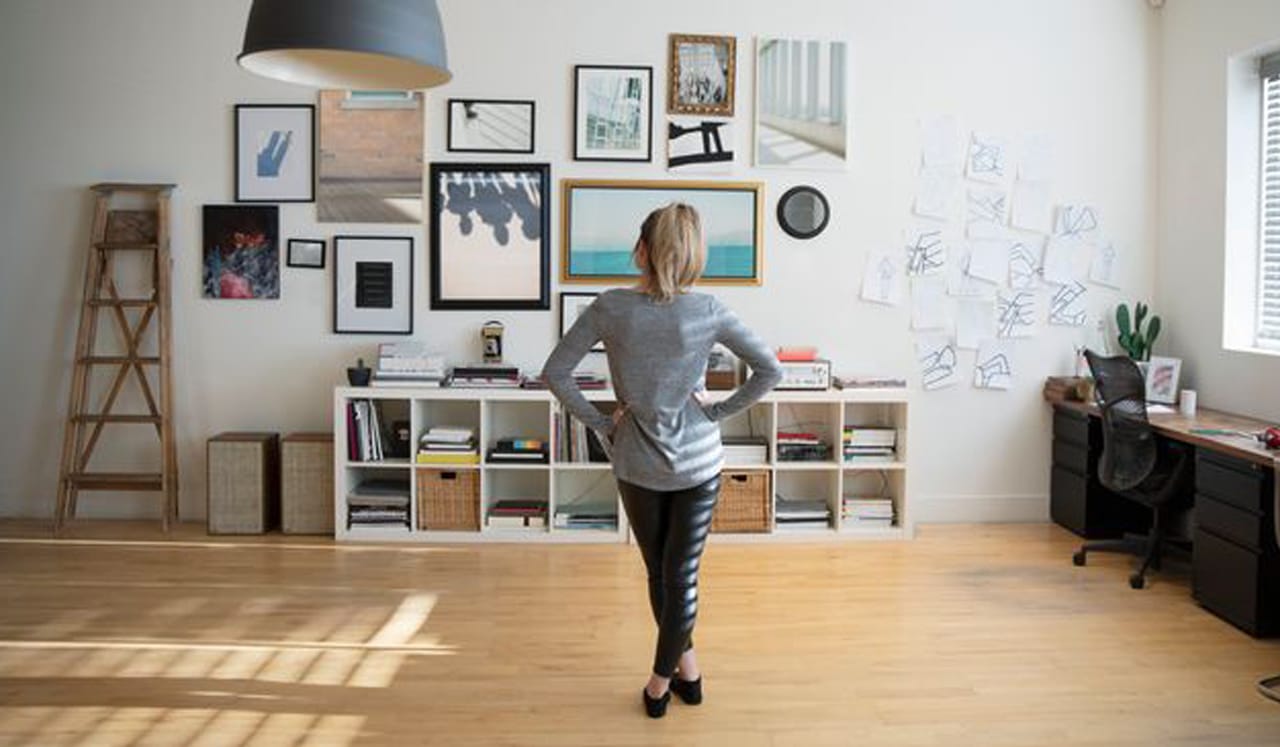4 Little-Known Benefits of Hanging Art in Your Home

Many people buy artwork just to fill their blank walls with something pretty to look at. But did you know that hanging artwork can have positive effects on other aspects of your life as well? The following list represents just a few of them, but when it comes to bringing more beauty into your home, you don’t really need an excuse to buy paintings, flower arrangements, and sculptures.
Inspire Creativity
Just looking at a well-crafted piece of art can stimulate the creative centers in the brain, inspiring you to emulate the work—or to cultivate something entirely new. Through close interaction with the works that you admire the most, you can achieve a greater understanding of the principles involved. Since art is a visual medium, this can be a more effective technique than studying theory.
This phenomenon isn’t the sole province of the artistically inclined, either. Even large corporations encourage their employees to inspect art collections on a regular basis, believing that this exposure will help promote company culture and foster a more positive work environment. Even if you don’t create art in the traditional sense, surrounding yourself with well-crafted images might inspire you to take a new initiative in other aspects of your life.
Stimulate Conversation
Be sure to place your favorite pieces in the areas where you’re most likely to entertain guests. Friends and family are bound to comment on your selections, thereby inviting you to share your opinion of the work and why you decided to buy it. Your guests may be inspired to open up about their own views, and possibly even their memories, of the pictures you’ve chosen.
Most importantly, don’t neglect the dining room, especially if you tend to host the annual holiday gatherings. Since dinner table conversation can be fraught with pitfalls—it can be difficult to steer the conversation away from potential taboos such as politics, money, and religion—artwork provides a soothing touchstone to refer to.
Even if one of the attendees doesn’t agree with your taste in art, the topic should be innocuous enough to keep people from becoming offended. If not, then you’re lucky enough to count some truly passionate individuals as members of your inner circle.
Improve Your Mood
Studies show that about 6.7 percent of adults have depression in the United States. While any artwork is not a replacement for adequate treatment, surrounding yourself with beautiful images can have a positive influence on your overall mental health. In fact, many professionals consider art therapy to be an effective means of treatment, although it may need to be combined with other elements in order to work.
Art encourages us to slow down and look closely, two things that today’s fast-paced and hectic environment has conditioned us not to do. As a result, the simple act of standing and observing images can help to slow your breathing and regulate your blood pressure. If the images are appealing to you, they’ll also give your brain a boost of serotonin, the chemical that promotes feelings of happiness and well-being.
One way to ensure that your home’s artwork will have these effects is to choose pictures that bring back positive memories. Maybe there’s a particular fresco that hung in a favorite relative’s home or one that’s painted by an artist whose works you first admired on your honeymoon. If you don’t have any experiences like these, now is the perfect time to begin crafting a new chapter.
Promote Childhood Development
According to experts, it’s never too early to begin talking to your young children about art. Children experience the world in a purely visceral way, which is why creating their own artwork is particularly stimulating for them. However, they don’t have to be creating art in order to discuss it. In addition to providing them with basic information regarding shapes and colors, conversations about artwork can go a long way toward improving language skills in toddlers and preschoolers. Taking them to look at murals and paintings is always encouraged, but why not bring the paintings to them instead?
Naturally, this doesn’t mean you have to embark on long-winded explanations about art history and the theories involved. Just encourage the child to look at the images and talk about what they see. You can offer your own feedback from time to time, or just step back and see where their imaginations take them. You’ll be helping to foster an appreciation for art that could sustain them through the rest of their lives.
There’s a reason why art was one of the earliest recorded means of communication, and why it continues to speak to us today. Filling your walls with your favorite examples of this universal language will infuse your household with harmony, inspiration, and culture—all communicated in a single glance.


